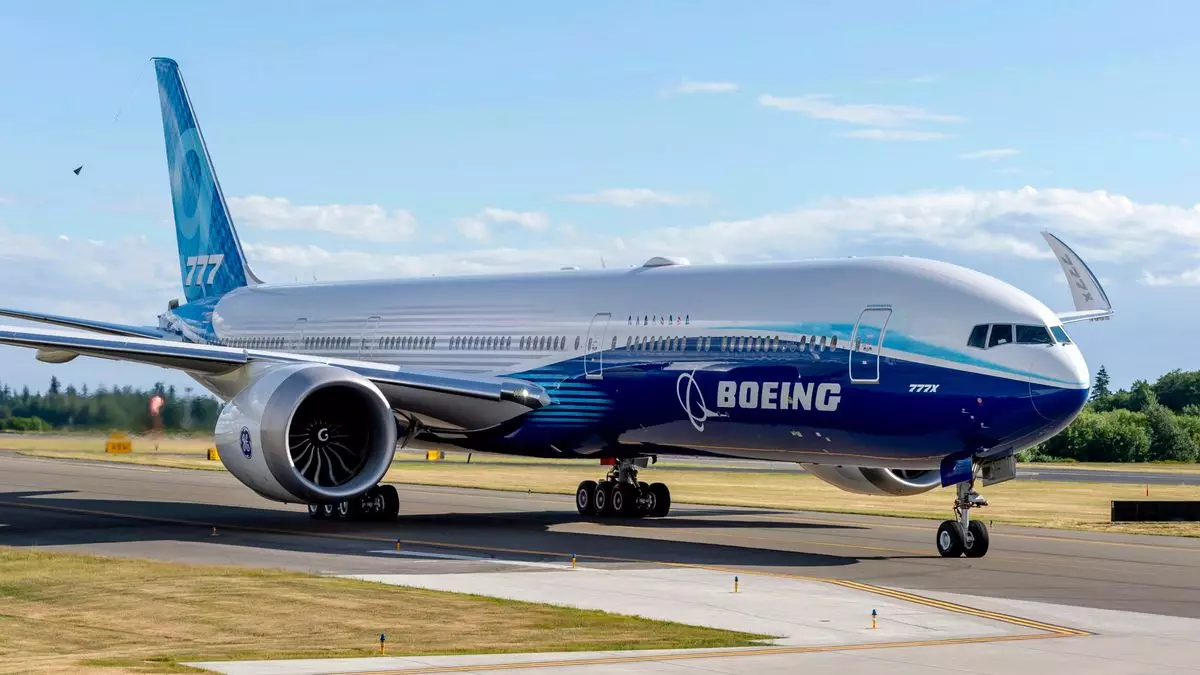The recent developments at Boeing highlight a pivotal moment not just for the company, but also for the thousands of workers involved and the aerospace industry as a whole. After an intense month-long strike, negotiations between Boeing and the International Association of Machinists and Aerospace Workers (IAM) yielded a new contract proposal aimed at resolving the stalemate. The details of this proposal, and the broader context surrounding it, underscore the complexities of labor relations and the challenges facing large corporations like Boeing.
As the strike approached its fifth week, the stakes grew higher, compelling both parties to make concessions. The recent contract proposal includes significant pay raises that now total a 35% increase over four years, marking an enhancement from the previous 30% offer. Moreover, the one-time ratification bonus has been increased to $7,000, up from $6,000. While these adjustments cater to the immediate economic concerns of the workers, they do not fully address some of the union’s core demands, particularly the restoration of a traditional pension plan. Instead, the proposal focuses on bolstering the 401(k) retirement plans through increased matching contributions, reflecting a trend in modern employment that often shifts workers’ financial security onto their shoulders.
One notable aspect of the proposal is the retention of performance bonuses, which Boeing initially sought to eliminate. This development has been presented as an essential component of the overall compensation strategy and aims to assure workers of their value in a competitive job market. In their statement, union leaders praised the new offer as evidence of the workers’ resolve. Such a sentiment illustrates the power dynamic inherent in labor negotiations—when workers unite, they can compel corporations to reassess their strategies and offers.
The logic behind performance bonuses is not merely to motivate employees; it also serves as a counterbalance against the backdrop of economic uncertainty and fluctuating company performance. The union emphasized that when the proposed annual pay raises are compounded, they culminate in an impressive 39.8% increase. However, this figure prompts a critical inquiry: is it sufficient in the context of workers’ expectations and the rising cost of living?
The Role of Government and Economic Implications
The involvement of acting Labor Secretary Julie Su has also garnered attention, indicating a broader concern from the Biden administration regarding the ramifications of the strike on the overall economy. With Boeing being a crucial player in the aerospace sector, the company’s production halts could ripple through its supply chains and directly impact local and national economies. Notably, suppliers like Spirit AeroSystems have already begun furloughs for their employees, demonstrating the interconnectedness of the aerospace industry and the gravity of labor disputes.
Moreover, the implications of Boeing’s recent decisions unfold under the watchful eye of its new CEO, Kelly Ortberg. With a reported 17,000 layoffs on the horizon, it is clear that difficult choices are being made to maintain financial stability. The planned capital raise of up to $25 billion suggests that Boeing may require significant influxes of cash to navigate this turbulent period.
The Future of Labor Relations at Boeing
As the IAM prepares to hold a ratification vote on the proposed contract, the weight of decision-making is placed squarely on the workers who feel the direct effects of these negotiations. While the offer may seem more palatable than earlier proposals, it lacks the comprehensive benefits that some were hoping for during the talks. How unions and companies alike navigate these complex relationships will influence not only the outcome of this strike but could shape the future of labor negotiations across industries.
The new contract proposal represents both progress and unresolved challenges. Workers are at the forefront of this narrative, and the outcome of the upcoming vote will be a testament to their collective strength and aspirations. The long-term effects on labor relations and Boeing’s operational capacities remain to be seen, yet one thing is clear: the aerospace giant finds itself at a crossroads that will define its future.


Leave a Reply